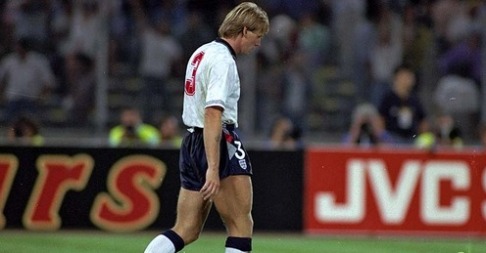It’s an exciting time if you are a football fan, with the World Cup in Brazil just around the corner. As I write this, breweries, tinned hot dog producers and flat-screen TV manufacturers up and down the land will be hoping that both England and the weather turn up on time. In workplaces, people will be planning annual leave and forecasting sick leave in roughly equal measure. Tabloid newspapers will be printing cut-out prayer mats and giving away free flags to whip the nation into a ‘1966’ frenzy before we inevitably go out on penalties in the quarter-finals. Probably.
It’s a chance to see some of the world’s best players. And Wayne Rooney. Argentina’s Lionel Messi will be causing defenders to wake up in cold sweats, whilst Cristiano Ronaldo will be doing the same for many female supporters. Spain will inevitably win the thing, having passed the ball around for a month, probably texting their mates and signing autographs at the same time, before eventually deciding they’ve had enough for the day and decide to put a few goals past their demoralised opponents. England, well, it’s England isn’t it? The Forrest Gump of International Football – “you never know what you’re gonna get.”
Still, the fans of all nations can look forward to the spectacle.
Apart from a few. Marcleudo de Melo Ferreira is one. He was working on the stadium in Manaus where England are due to play Italy when he fell 35 metres from the roof which was being installed. He was 22 years old and the third person to die during the construction of the World Cup stadiums. Since his death, after which there was a period of mourning before work resumed, five more workers have died, bringing the total to eight who have been killed during the construction phase.
It’s no secret that Brazil’s tournament has been beset by problems: delays, a collapsed roof, budgeting issues and an immovable deadline. On its own, eight doesn’t sound like a big number. After all, it’s less than double figures and if you can’t make an omelette without breaking a few eggs, can you expect to build twelve stadia without killing a few workers? Is that an acceptable price to pay? The problem with the number ‘8’ is that it’s just a number. It doesn’t tell the story of the workers who gave their lives for the World Cup to happen and the impact that their deaths would have had on their families, children, wives and co-workers. The ripples of their deaths will go on in their communities long after the carnival has finished and England have trudged home sheepishly.
It’s hard to get details surrounding the circumstances of the eight deaths, other than what has been stated in the press so understanding the root causes is pure speculation. Poor management systems? Weak leadership? Faulty or poorly maintained equipment? Lack of training? Weak safety culture? Time pressures? Possibly all played a part. The 2012 Olympic build in London showed that you can build significant infrastructure safely by embedding a strong safety culture (no workers were killed during construction) but to compare the two is a little unfair: the UK has a world-class regulatory system and has made major strides in the last century in protecting workers from injury and ill-health and even in the UK the construction industry remains one of the most dangerous with 29 deaths between April and December 2013.
Everyone knows safety is important but it’s crucial that each fatality is learnt from, that the foot remains on the pedal in driving safety improvements. Because whilst each dead worker is represented by a statistic in official figures, they represented so much more to their own families and colleagues. We should constantly seek new ways of communicating risk and ‘nudging’ people to truly understand not just the risks of their work, but the impact that their failure to follow safe practice can have on others. I’ll leave you with this picture as an example.


